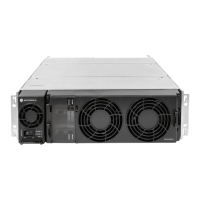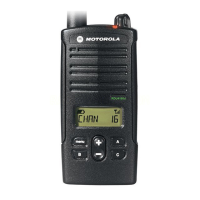4-1
Chapter 4 MTR3000 Station Control Module
4.1 Overview
This section provides an overview, detailed Theory of Operation and troubleshooting information for
the Station Control Module (SCM). The block diagrams, schematic diagrams, overlays, and parts
lists are provided on foldout sheets. Each block diagram shows the location and reference
designation for all electrical components. A complete list of all parts is provided with the parts
ordered according to the schematic reference number.
For specifications of the SCM, refer to the MOTOTRBO
TM
MTR3000 Base Station/Repeater Basic
Service Manual (68007024096).
4.2 Theory of Operation
The following theory of operation describes the operation of the SCM circuitry at a detailed level.
The information is presented to give the service technician an understanding of the functions
performed by the module in order to facilitate maintenance and troubleshooting to the component
level.
The MTR3000 Controller circuitry performs the digital signal processing, data formatting and audio
routing for the base station/repeater (BR) and provides external interfaces to the rest of the site.
The controller uses two TI OMAP1710 processors:
• Transmit and overall base station/repeater control functionality
• All receive functionality
Both OMAP1710 processors have their independent boot Flash and RAM, therefore can boot
independently. ARMIO12 on each OMAP1710 is used for the software to differentiate between Tx
and Rx OMAP1710. Tx OMAP has ARMIO12 tied high and Rx OMAP has ARMIO12 tied low.
The general functionality includes:
• Data and Control interface to the Receiver’s Abacus III devices
• Data and Control interface to the Receiver’s Trident chip set
• Data and Control interface to the Exciter’s Trident chip set
• Audio Codec interface with MAKO IC
• Host memory size, speed, and types supported
• External ports (Ethernet, USB, speaker and microphone)
• External physical interfaces (switches, connectors, LEDs, external references etc.)
• Tx/Rx DSP MCBSP interfaces
• Intermodule communication (SPI)
• Internal station reference generation

